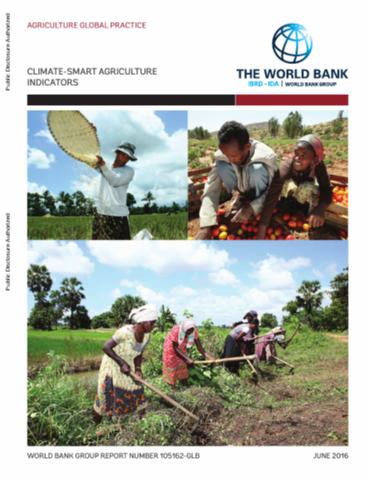Resource information
There is by now substantial consensus within the development community over the need for a more climate smart agriculture, which consists of three defining principles: enhancing agriculture’s resilience to climate change, reducing agricultural green-house gas emissions, and sustainably increasing production. With 795 million people still not getting their minimum dietary requirements, there is little scope for trade-offs between increasing production and improving agriculture’s environmental impacts. Making climate smart agriculture operational will rely on our ability to measure production, resilience, and emissions in a way that informs decision makers about the policies, technologies, and practices that most effectively promotes each. In addition to the direct results of an improved activity or practice, longer term outcomes can lead to fundamental changes in the way that producers, consumers, investors, and others behave—and what they base their production, consumption, and investment decisions on. The indicators described in this document were developed for this purpose. Applying the indicators to examine the agricultural performance of different countries reveals a number of correlates relating to institutions, legal frameworks, and the relationships between agriculture and other sectors like water and energy. Applying them to projects affirms the important advantages of approaches that employ appropriate technologies and that incorporate broader, landscape-based perspectives that recognize and allow for competing demands for land and water resources. The type of highly practical empirical evidence that will be amassed by monitoring these indicators is going to be pivotal in mitigating agriculture’s large ecological foot-print, in capitalizing on its potential to provide environmental services, and in guiding the forms of intensification that lead to substantially higher and more sustainable production.


